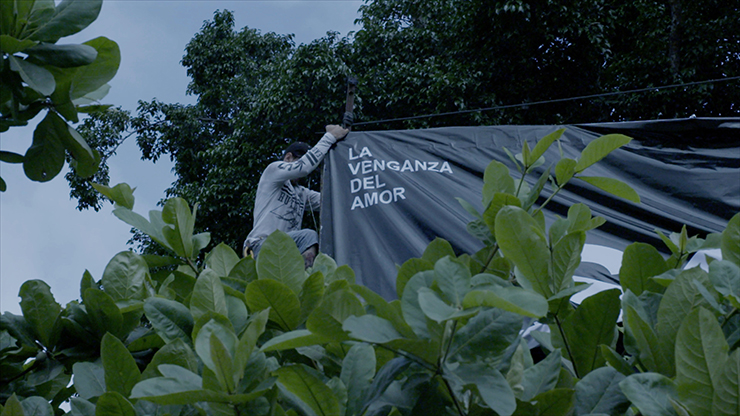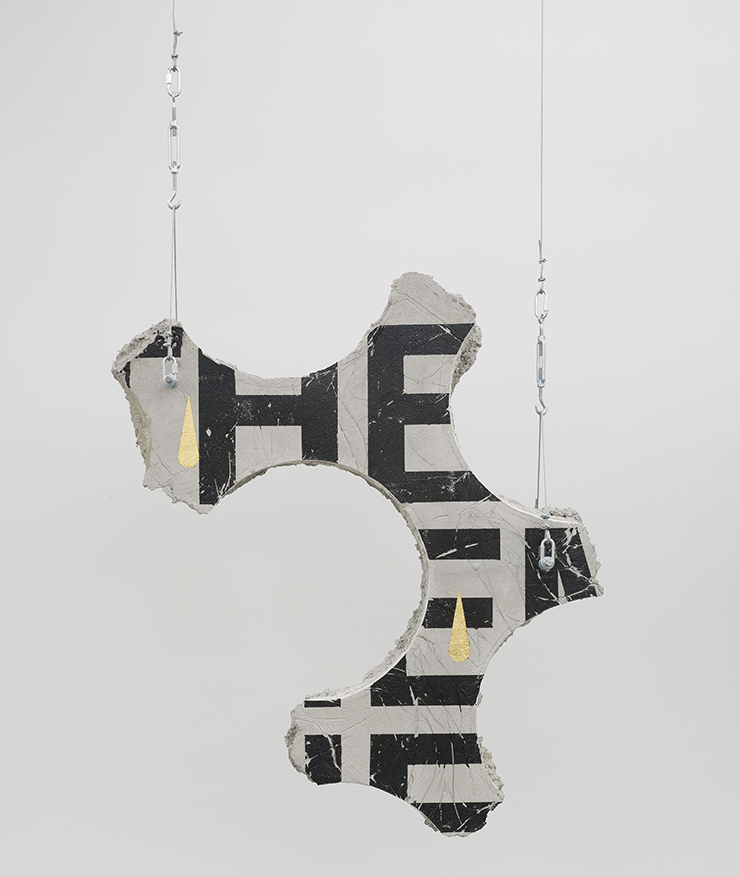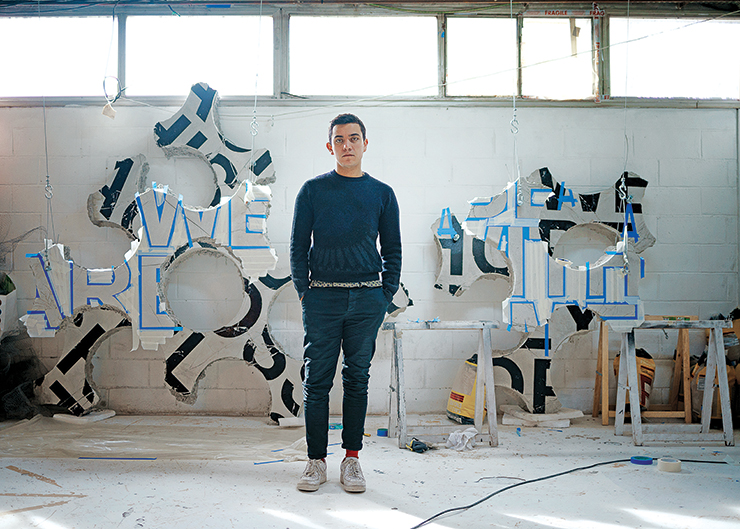Nevertheless, Argote sent him a link to his website featuring photographs, computer applications and short videos of guerrilla style performances shot in the Metro and streets of Paris. “I found his work very cheeky and I loved it,” says Perrotin, who invited the artist to show in a group exhibition the following year at (the now closed) Galerie Perrotin in Miami. Argote accepted and went on to later present “Caliente,” his first solo exhibition with the gallery’s Paris space in 2011. “Today, I’m proud of him and our collaboration,” says Perrotin. It was just the beginning.

To kick off the opening of Galerie Perrotin’s new Downtown Manhattan location, Argote will present “La Venganza Del Amor” (The Revenge of Love). The solo exhibition, opening April 27, will include new sculptures and works on paper but the “heart” of the show is As Far As We Could Get, a new 18-minute film of video and text, split into one and four minute sequences. Presented as an experimental documentary, As Far As We Could Get examines contemporary life in Neiva, Colombia, and Palembang, Indonesia, two far-flung cities that happen to be exact antipodes. “They’re exactly geographically opposite but it’s like there is parallel between them,” he says. “The point is to try to see history from others’ perspectives.” He adds, “In As Far As We Could Get there is some text in the film that explores how a new system could be set up using different standards other than domination, power and strength, like love and tenderness.”

Argote was born in Bogotá in 1983. Since the 70s, his parents have been socialist political activists. His father is currently the leader of Colombia’s left progressive party, Polo Democrático, and Argote says, “it seems like since I was born I have always participated in activism.” His art reflects an activist’s sensibility in that its themes often concern the renegotiation of history and power as is explored in “La Venganza Del Amor.” As Far As We Could Get comes after two successful video projects: 2014’s The Messengers, a film that follows Gaby and Blaine, two young Americans wandering around the small towns of Mompox, Colombia and Arcos de la Frontera, Spain, and last year’s Fructose, a poetic documentary that attempts to debunk the story of how Isaac Newton observed the law of gravitational pull by watching an apple fall from a tree in the English countryside. “Many of my works ask questions about how countries generate history through patrimony, how they show their history in their cities through monuments that they want to conserve and preserve,” he says, noting that “they never show a pineapple or a papaya or something that’s in Colombia.”

For his Galerie Perrotin exhibition, to further cheekily examine who deserves to be at the center of history, Argote created a sculpture of a large scale sweet potato—the root vegetable that is thought to have originated in South America and consumed all over the world—cast in aluminum and covered with gold. He calls it “a new icon” of power.











 in your life?
in your life?

